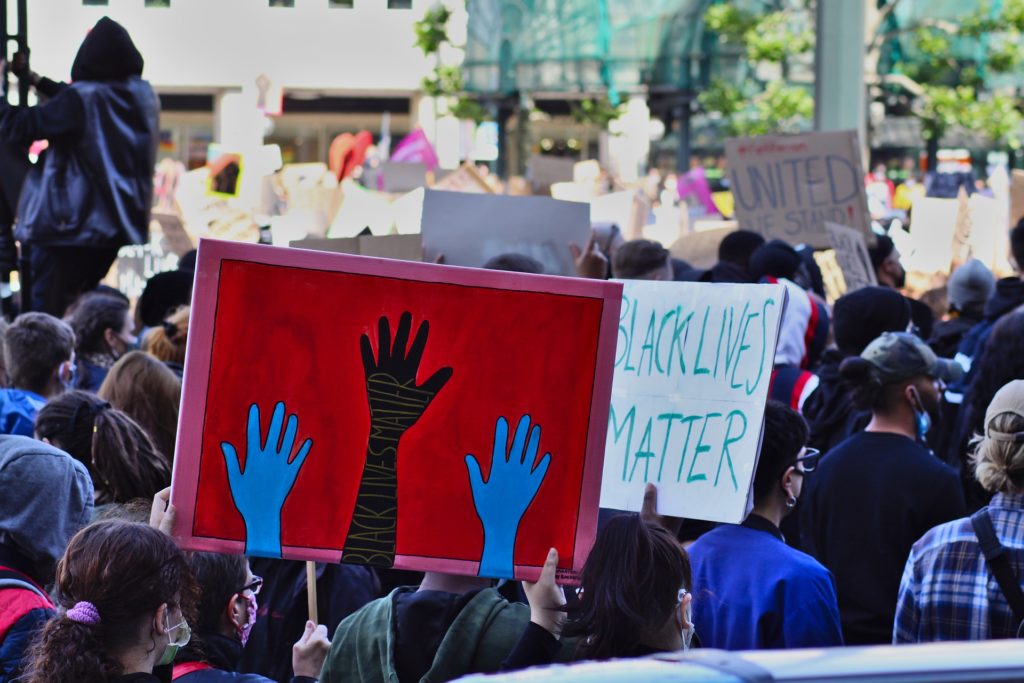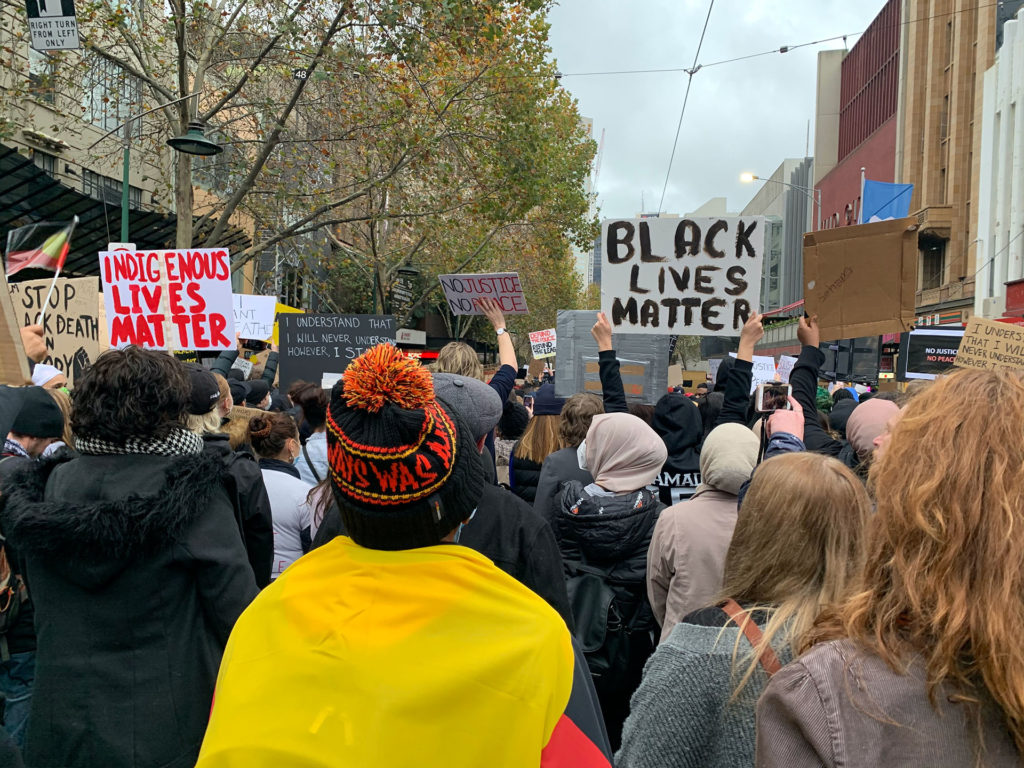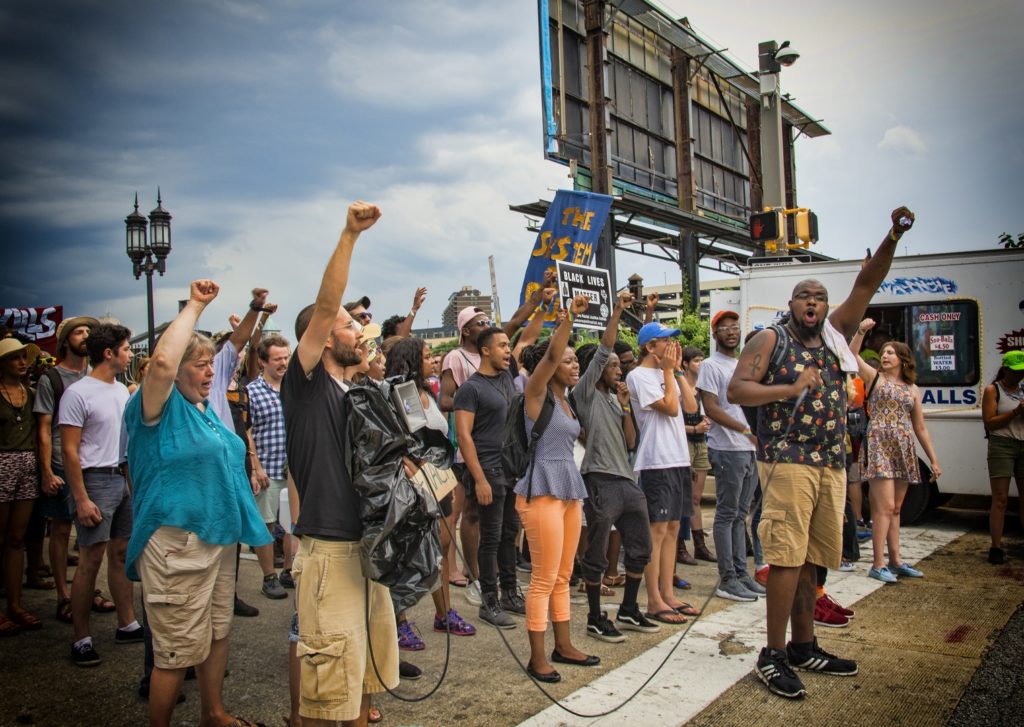by Angela Fiore and Caroline Harth
This is a long read. Get comfortable. The Black Lives Matter movement was born in 2013, as a reaction to the acquittal of the police officer who shot and killed African-American teen Trayvon Martin. Back then, the movement was considered fringe activism, with conservative pundits going so far as to call it a hate group (some of them are still doing that, but we are not going to mention Tomi Lahren on this blog). No major brands took notice of Back Lives Matter at the time, leaving the hashtag to politically active social media users and focusing on the sunny side of capitalism instead. In 2014, Black Lives Matter made headlines again, in the wake of Michael Brown and Eric Garner’s deaths. The protests that sparked up in Ferguson, where Brown was killed, raised awareness of the movement – that’s when the rest of the world started to familiarise ourselves with the hashtag. Still, not a big brand in sight. It’s politics. Politics is divisive. Divisive is bad for business.
In 2016, the horrifying, live-streamed murder of Philando Castile at the hands of a white police officer sent ripples of shock across the world, sparking new – largely unheeded – protests. A few months later, NFL superstar Colin Kaepernick kneeled during the national anthem. This gesture, which was destined to become iconic, caused him to be fired and blackballed by the NFL. Enter Nike, the first brand to support – some say appropriate – the Black Lives Matter agenda. The brand chose Kaepernick as the face of its 2018 ad with the payoff “Believe in something. Even if it means sacrificing everything.”
Since 2013, the concepts of CSR (Corporate Social Responsibility) and, later, PCSR (Political Corporate Social Responsibility) have gained traction all over the world, to the point that it is now considered not only acceptable but appropriate for a brand to support a social cause, to broadcast its workplace politics, and to be held accountable for its policies on inclusivity, diversity, and equal pay.
Fast-forward to 2020, the year when the screenwriters responsible for the long-running show known as Human History ran out of even remotely believable ideas and decided to go full George R.R. Martin on their characters. At the height of a pandemic that is affecting the United States more than any other country in the world, and the non-white communities within it disproportionately more than the rest of the population, George Floyd was murdered, in cold blood and on camera, by a white police officer, while the officer’s colleagues calmly watched without intervening. The protests that followed this murder were – and are – unprecedented. At the moment of writing, a single day has not gone by without thousands of people demonstrating in every single American state. The movement has expanded, with marches and die-ins (demonstrations in which protesters lie face-down for 8 minutes and 46 seconds, the exact time George Floyd was pinned to the ground with his killer’s knee on his neck) taking place all over the world, often in front of American embassies.

We are not here to discuss the evolution of the protests, the riots, and the unconscionable violence with which they have been met by the current administration. There are plenty of better resources for you to learn about that. We are here to talk about brands and what we should make of their new-found commitment to the Black Lives Matter cause.
Does marketing have a place in political activism?
Brands have taken a more definite and decisive stance this time. From small brands to international corporations, they are flooding Twitter with #BlackLivesMatter hashtags, releasing ads, publicly donating to organisations that support black and brown communities in America and elsewhere, and they generally seem to have agreed that saying that black people have human rights should not be a controversial statement.
if the boardroom is as white as Mike Pence’s Christmas dinner, sympathetic tweets still count as jumping on the band-wagon.

The reactions to this new trend have been mixed. Some rightly suggest we should be wary of marketing talk and check on each brand’s policies and history, before praising their commitment. It makes perfect sense to want to make sure that a brand tweeting about #BlackLivesMatter is also donating to relevant organisations and implementing active anti-racist policies within the company. Others suggest that it is not enough to donate, tweet, and ensure no employees are discriminated against: if the boardroom is as white as Mike Pence’s Christmas dinner, those tweets still count as jumping on the band-wagon. Which is also true. We do believe, however, there is more to this side of marketing than that. Not for idealistic reasons, but for practical ones.
This sudden wave of racial awareness in corporate marketing is nothing new. It is, in fact, another instance of that form of tokenism that is commonly known as pink-washing. Similar discussions have been had about big brands sponsoring pride marches and creating rainbow-branded products to celebrate pride month. The same justified concerns have been raised about the authenticity and earnestness of their commitment to the lgbtqia+ cause.
When brands align to the zeitgeist, they don’t necessarily do it because they want to be on the right side of history, but because that they have calculated that being on the wrong one might affect their bottom line negatively.

Why do brands choose to support a social cause? Because they have ethics? No. Brands are not people. Brands are assets, their personalities are assets, they do not have the ability to develop ethics. Because the people running them care about certain values? That is not impossible. It is even probable that some brands may be run by normal, decent people, who realised they have a platform and decided to use it to amplify black and brown voices and demand change. Do they do it because they want to boost their sales? Well, yes, but why then haven’t they done it in 2013, 2015, or 2016? Because of the metrics. Because now this cause is relevant enough to make a difference. Because polls have been run showing young consumers are over 3 times likelier to change their purchasing behaviour based on a brand’s stance on racial matters. Because over 50% of American voters think law enforcement needs reforming and police brutality against black people needs to stop. When brands align to the zeitgeist, they don’t necessarily do it because they want to be on the right side of history, but because that they have calculated that being on the wrong one might affect their bottom line negatively.
Is this good or bad? We do not wish to provide an answer to that question. What we do know is that it is useful and we believe it should be used. How do we know that the metrics matter so much? Because brands are not the only ones paying attention to them. Political institutions are listening too, even those that keep pushing back. And, unlike in 2013, 2014, and 2016, change is happening now. Slowly and infinitely too late, but it is coming. From the taking down of slave-owners statues and Columbus statues to Los Angeles Mayor Eric Garcetti slashing the LAPD budget to pay for community-focused programs to tackle poverty, promote education, and address social issues in non-white communities.
A critical mass is currently pushing the Overton Window in the direction that the BLM movement intended
Is marketing making the world a better place?
Are we saying that politicians are making budget adjustments and writing bills because Ben & Jerry’s tweeted “Black Lives Matter”? Of course not, but we do know that these two occurrences are related and they combine to prove that activism works. A critical mass is currently pushing the Overton Window in the direction that the Black Lives Matter movement intended and all of these factors came into play to make that possible. Incidentally, does it matter whether the chairperson (or, in most cases, the cis, white chairman) of an organisation donating to charity is doing it because they have their heart in the right place or because they calculated that donating and promoting donations to a BLM-related charity will make them look good? It certainly matters when it comes to voting and it undoubtedly makes a difference to the good of their immortal soul if they have one, but it does not necessarily matter to the charities that end up having more money to complete projects and help black communities, to pay activists’ bail and to fund education and mental health services. Hence the importance of checking that these companies put their money where their tweets are, and calling them out on internal policies, but still, by all means, taking their support and their donations. In fact, that’s how you create a positive domino effect through marketing: not only by making it good marketing to support and fund BLM-related projects but also by making it terrible marketing not to do it.
If, at the end of this long read, you are still not convinced, here’s a short and definitely incomplete list of the charities you can donate to, and that are currently being promoted by mainstream brands.
ACLU
BlackVisions
Black AIDS Institute
Black Lives Matter
Black Trans Protestors Emergency Fund
Campaign Zero
Center for Policing Equity
Equal Justice Initiative
George Floyd Fund
Loveland Foundation
Marsha P. Johnson Institute
NACCP
Project NIA
Reclaim the Block
Solace Women’s Aid
Southern Poverty Law Center
The Bail Project
The Voice of Domestic Workers
Until Freedom





